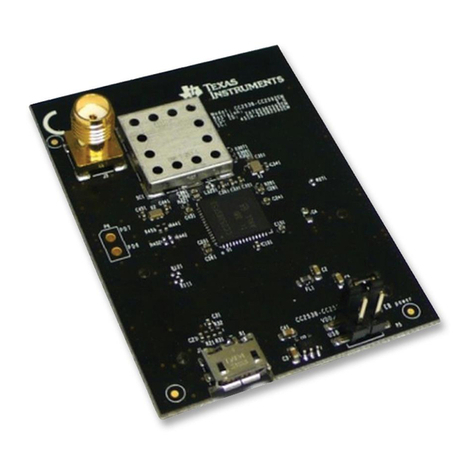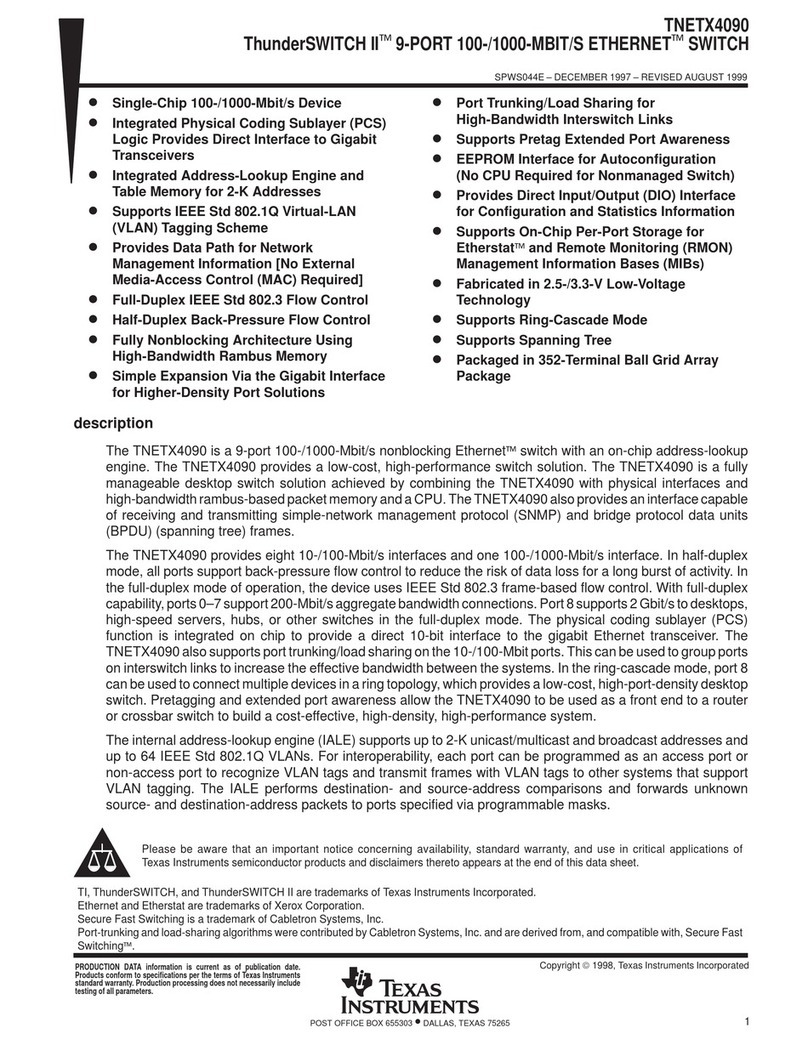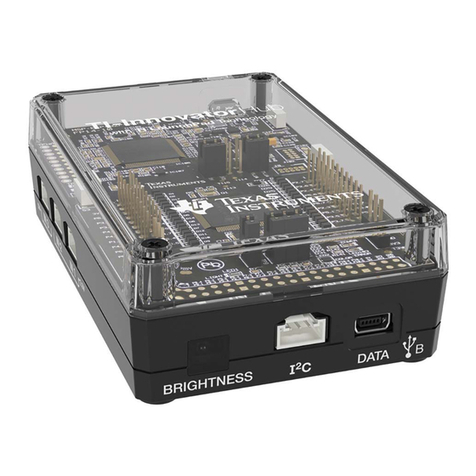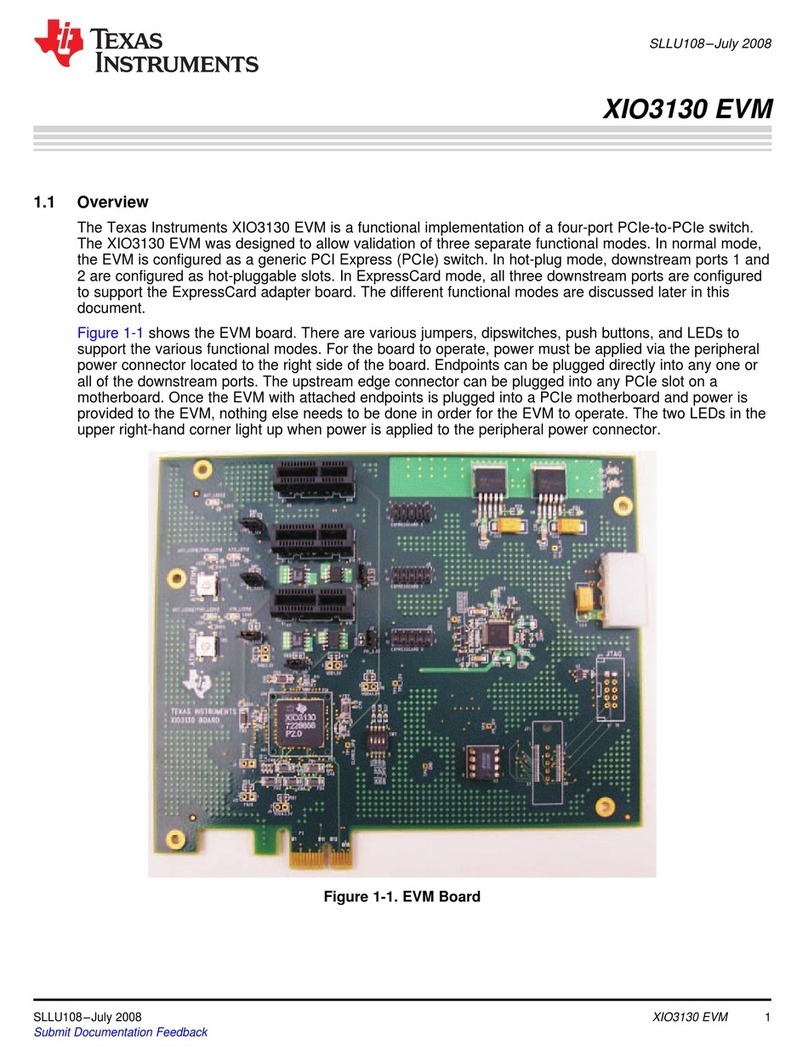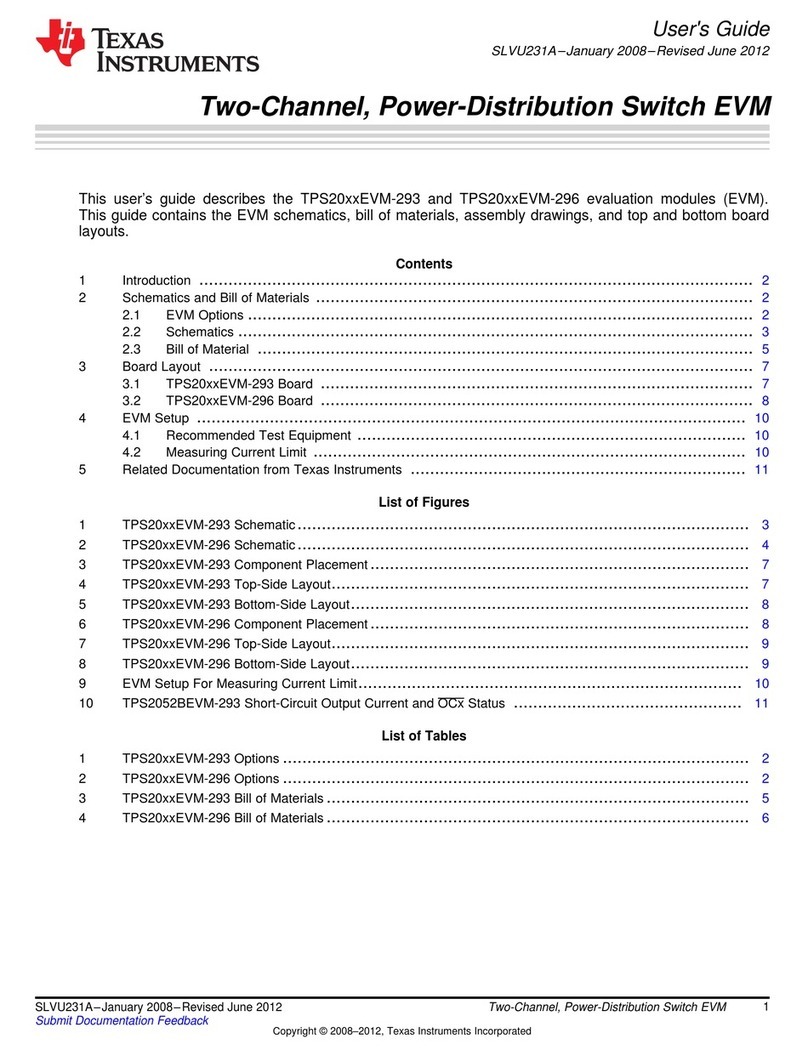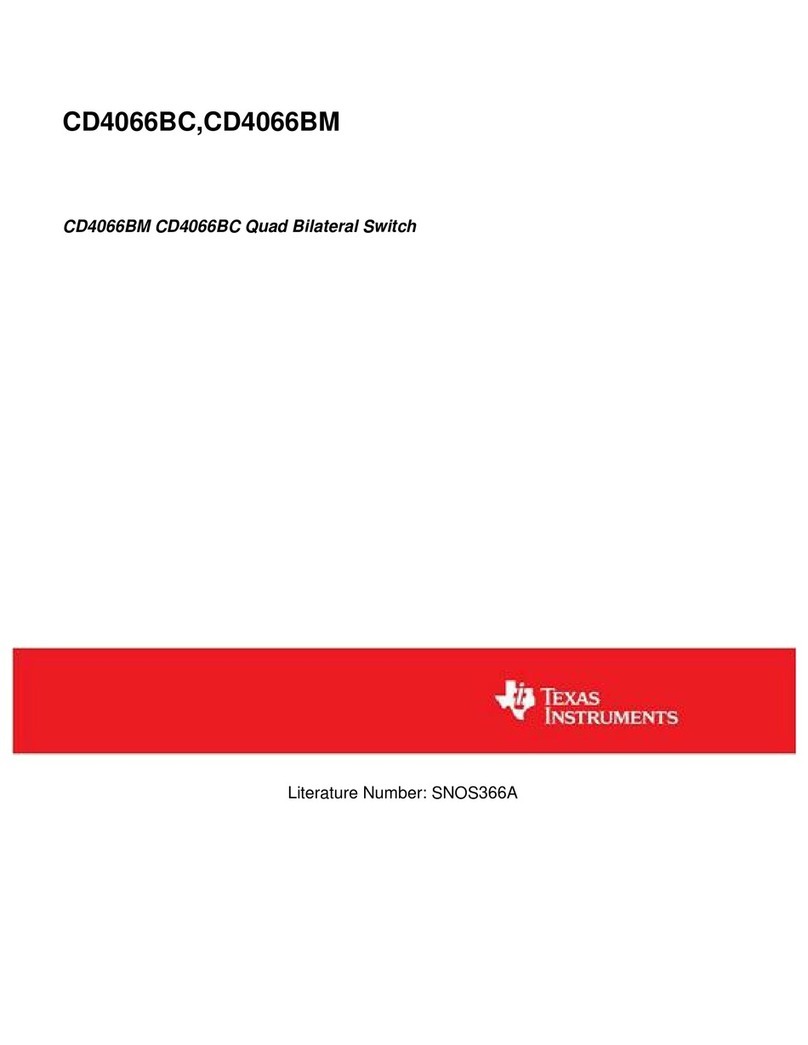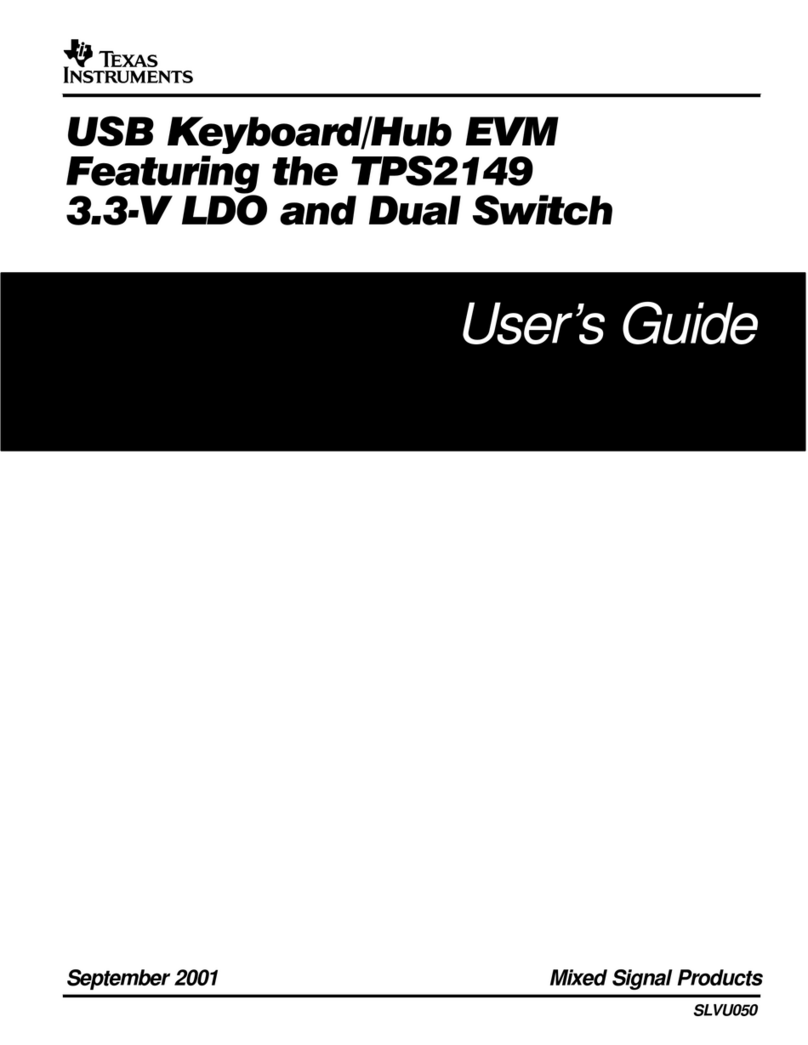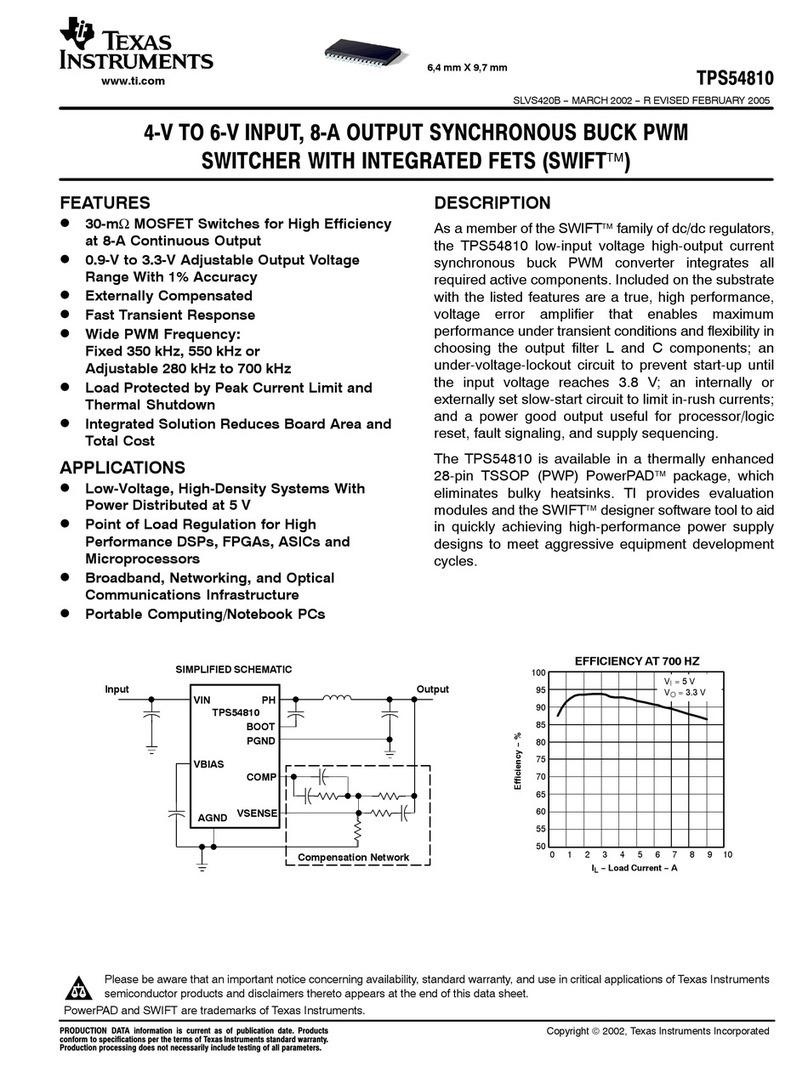
User's Guide
SLUU826–January 2012
Using the TPS53310EVM-755, A 3-A Eco-mode™
Integrated Switcher With Master-Slave
The TPS53310EVM-755 evaluation module (EVM) is a high-efficiency evaluation platform with two
TPS53310 3-A, integrated FET, step-down converters working in a Master-Slave synchronization scheme.
The two outputs are 1.5 V/3 A (master) and 1.2 V/3 A (slave) from a 3.3-V or 5-V input bus. The EVM
uses the TPS53310 synchronous buck controller with integrated switcher.
Contents
1 Description ................................................................................................................... 3
1.1 Typical Applications ................................................................................................ 3
1.2 Features ............................................................................................................. 3
2 Electrical Performance Specifications .................................................................................... 3
3 Schematic .................................................................................................................... 5
4 Test Setup ................................................................................................................... 6
4.1 Test Equipment ..................................................................................................... 6
4.2 Recommended Test Setup ....................................................................................... 7
5 Configuration ................................................................................................................ 8
5.1 5Vin Option (J1: 5Vin Option) .................................................................................... 8
5.2 Mode Selection (J2: MST Mode) ................................................................................. 8
5.3 Mode Selection (J7: SLV Mode) ................................................................................. 8
5.4 Synchronization (J5: SYNC) ...................................................................................... 8
5.5 Master Enable (J4: EN_MST) .................................................................................... 9
5.6 Slave Enable (J9: EN_SLV) ...................................................................................... 9
6 Test Procedure .............................................................................................................. 9
6.1 Line/Load Regulation and Efficiency Measurement Procedure .............................................. 9
6.2 Loop Gain/Phase Measurement ................................................................................. 9
6.3 List of Test Points ................................................................................................ 10
6.4 Equipment Shutdown ............................................................................................ 10
7 Performance Data and Typical Characteristic Curves ................................................................ 10
7.1 Efficiency .......................................................................................................... 11
7.2 Load Regulation .................................................................................................. 11
7.3 Line Regulation ................................................................................................... 12
7.4 1.5-V Output Ripple .............................................................................................. 12
7.5 1.5-V Switching Node at Full Load ............................................................................. 13
7.6 1.5-V Switching Node at No Load .............................................................................. 13
7.7 Master-Slave 180°Synchronization ............................................................................ 14
7.8 1.5-V Master Turnoff During Master-Slave Synchronization ................................................ 14
7.9 1.5-V Output Transient ........................................................................................... 15
7.10 1.5-V Turnon Waveform ......................................................................................... 15
7.11 1.5-V Turnoff Waveform ......................................................................................... 16
7.12 1.5-V Hiccup OCP Waveform ................................................................................... 16
7.13 1.5-V Bode Plot ................................................................................................... 17
7.14 EVM Top Board Thermal Image ................................................................................ 17
8 EVM Assembly Drawings and PCB Layout ............................................................................ 18
9 Bill of Materials ............................................................................................................. 22
Eco-mode is a trademark of Texas Instruments.
1
SLUU826–January 2012 Using the TPS53310EVM-755, A 3-A Eco-mode™Integrated Switcher With
Master-Slave
Submit Documentation Feedback Copyright ©2012, Texas Instruments Incorporated
